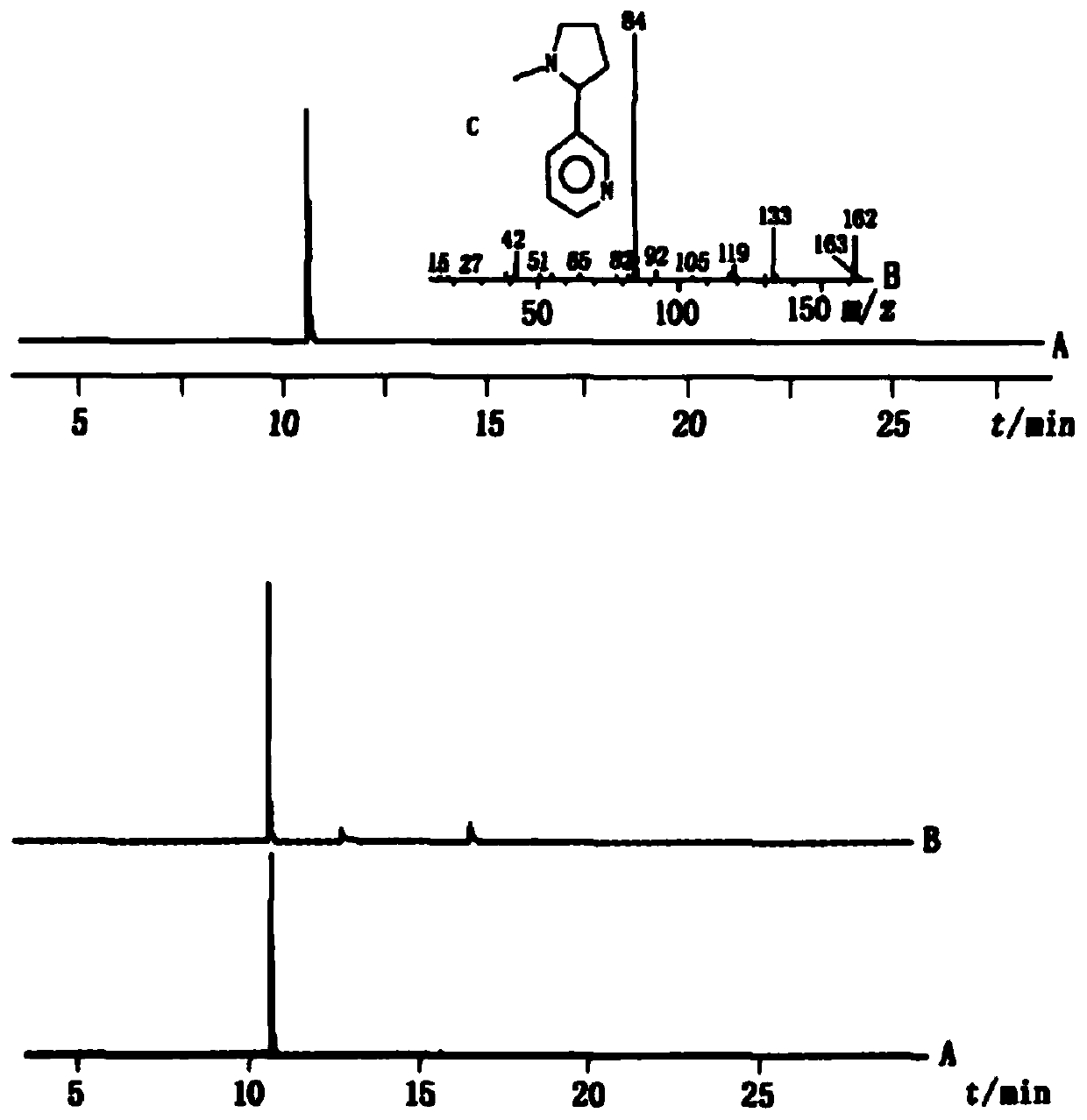A Transgenic Hyperhalophilic Archaea nasod Gene Tobacco
A technology of extremely halophilic archaea and tobacco, applied in genetic engineering, plant genetic improvement, recombinant DNA technology, etc., can solve the problems of slow development and no breakthrough in the development and utilization of high-salt-tolerant genetic resources.
- Summary
- Abstract
- Description
- Claims
- Application Information
AI Technical Summary
Problems solved by technology
Method used
Image
Examples
Embodiment 1
[0021] Example 1 Construction of expression vector p1301-NaSOD
[0022] Cultivate Escherichia coli containing plasmid pGEX-SOD (patent application 200810163748.8), use specific primers of halophilic archaea NaSOD gene (add Pst I and Kpn I enzyme cleavage sites respectively) for bacterial liquid PCR, and recover the purified PCR product Linked to the intermediate vector pMD19-T, transformed E. coli DH5α. Pick positive clones, PCR and sequencing identification. Shake the correct bacterial solution to extract the plasmid pMD19-NaSOD. The plasmid pMD19-NaSOD was digested with Pst I and Kpn I, and then inserted into the multiple cloning site of pCAMBIA1301, and the CaMV 35S promoter and NOS terminator were inserted before and after the target gene to obtain the plant expression vector pCAMBIA1301-NaSOD (such as figure 1 Shown). After the recombinant was identified by restriction enzyme digestion, it was introduced into Agrobacterium EHA105 by freeze-thaw method.
[0023] NaSOD specif...
Embodiment 2
[0026] Example 2 Agrobacterium-mediated genetic transformation of tobacco
[0027] 2.1 Tobacco aseptic seedling culture
[0028] 1) On a sterile ultra-clean workbench, put the tobacco seeds into a 1.5mL Eppendorf tube, wash with 75% ethanol for 1 min, and rinse with sterile water for 3 to 4 times;
[0029] 2) Add 10% NaClO and soak for 10 minutes, rinse with sterile water 4 to 5 times to remove trace amounts of NaClO;
[0030] 3) Put the seeds on sterile absorbent paper to absorb trace water, and sown on MS0 medium at 25°C (16h / 8h=light / dark). When the plant grows to 6-8 leaves, it is used for preparation Explants transformed by tobacco.
[0031] 2.2 The leaf disc method transforms tobacco
[0032] 1) Inoculate the Agrobacterium broth containing pCAMBIA1301-NaSOD in LB liquid medium containing 50mg / L Kam (kanamycin) and 40mg / L Rif (rifampicin), shaking at 28°C overnight (200rpm), When the bacteria grow to (OD600=0.5~0.8), centrifuge (5000rpm) at 28℃ for 8min, resuspend the collected ba...
Embodiment 3
[0039] Example 3 Identification of transgenic plants
[0040] Hygromycin screening: After transplanting the regenerated seedlings into the greenhouse, select new leaves in the same position, take 2~3cm, and soak them in sterile water containing 50mg / L hygromycin and 1.0mg / L 6-BA. After 5 days, the leaves of non-transgenic tobacco turned yellow and brown, the leaves of false positive plants also turned yellow, and the leaves of transformed plants remained green.
[0041] PCR detection of genetically modified tobacco: The total DNA of tobacco leaves was extracted by SDS method, and amplified with NaSOD specific primers. All 14 transgenic samples had a band at 621 bp (such as figure 2 Shown).
PUM
 Login to View More
Login to View More Abstract
Description
Claims
Application Information
 Login to View More
Login to View More - R&D
- Intellectual Property
- Life Sciences
- Materials
- Tech Scout
- Unparalleled Data Quality
- Higher Quality Content
- 60% Fewer Hallucinations
Browse by: Latest US Patents, China's latest patents, Technical Efficacy Thesaurus, Application Domain, Technology Topic, Popular Technical Reports.
© 2025 PatSnap. All rights reserved.Legal|Privacy policy|Modern Slavery Act Transparency Statement|Sitemap|About US| Contact US: help@patsnap.com



